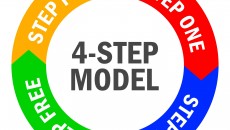The term leadership generally evokes thoughts of both famous and infamous personalities from world history. Whether pioneers of nations, great religious ambassadors, the peace-makers or founding fathers of modern industry; all hold a number of common traits. Having the ability to inspire followers, to make timely and decisive decisions and always be seen to “do the right thing”, are amongst the perceived virtues of a true leader. So is there room for what may be considered as very human based behaviour in the modern world of business and technology?
In a process driven society, many business professionals believe that a systematic management approach is key to a successful and sustainable organization. Indeed, John Kotter, Professor of Leadership at Harvard University, states; “Management is a set of processes that keep an organization functioning.” Does this vie the question of a need for any business orientated organization to be concerned in leader investment?
Academic research supports that leadership and management should co-exist and become harmonized to operate for the present and the future. CEO’s recognise that there is a requirement for the people that develop the system (the manager) and those that implement and establish the system (the leader). For the latter to be accomplished, identifying inspirational, motivational and intuition qualities are paramount to accomplish the manager’s plan. Therefore, how are these leaders identified?
Modern business generally does not provide the opportunity for many to naturally display leadership skills; especially with less face-to-face communications and interactive behaviour.
Therefore, HR departments must have robust procedures in place to recruit and recognise such talent. Some corporation’s utilise psychometric assessment to define personality types or categories, but this will not fully determine the essence of a leader to fit the organization.
HR must also recognise the ability of a person that can incorporate assertiveness, powers of persuasion and inspiration, whilst remaining focused on the organizational goal(s); to establish a productive and effective team. The different types of leadership styles should also be considered to identify the correct functional approach to the correct level of team ability.
A popular model is presented by Paul Hersey and Ken Blanchard’s Situational Leadership, which articulates the need of the leader to assess the team/person to apply the most appropriate method. This model can also present opportunity for developmental awareness to improve the team. However, is there a need for team development at the organization’s expense?
Why not employ the ‘A List’? Doesn’t development mean resources, time and money? It can be debated that the ‘A List’ generally means highly competent and capable professionals,who are at the top of the success ladder and often employed to address short-term objectives.
Individually exceptional, though possibly not good team members (followers), this is an efficient modus operandi, if tasks can be conducted in isolation, with minimum communication requirements.
However, what of large corperation’s? Many may wish to mould their employees within a company ethos and establish a consistent and stable hierarchy with the opportunity for personal and professional development focused on the organization’s vision and mission.
Is it probable that this type of establishment would demonstrate more acceptance and tolerance to institutional change and advancement due to the dynamics of being part of a team with a recognised focal leadership?
It is human nature to feel the safety of the group and be in the knowledge that any journey and challenge will be accomplished as one.
This notion has been employed by many organizations to manage change and lead change – two different functions (planning and implementing), which if poorly facilitated can be an emotional roller-coaster and detrimental to operational functions.
John Fisher’s Transitional Model provides very clear definitions through the stages of change. Therefore, a leader must be conscious this is normal and should employ the most appropriate leadership style to be successful and take the team to accomplishment; noting leadership styles may change throughout the transition.
Acknowledgments:
John F Fisher (2012); Fisher’s Personal Transitional Curve.
Paul Hersey and Ken Blanchard (1988); Situational Leadership Theory.
John Kotter; Konosuke Matsushita professor of leadership at Harvard University.





